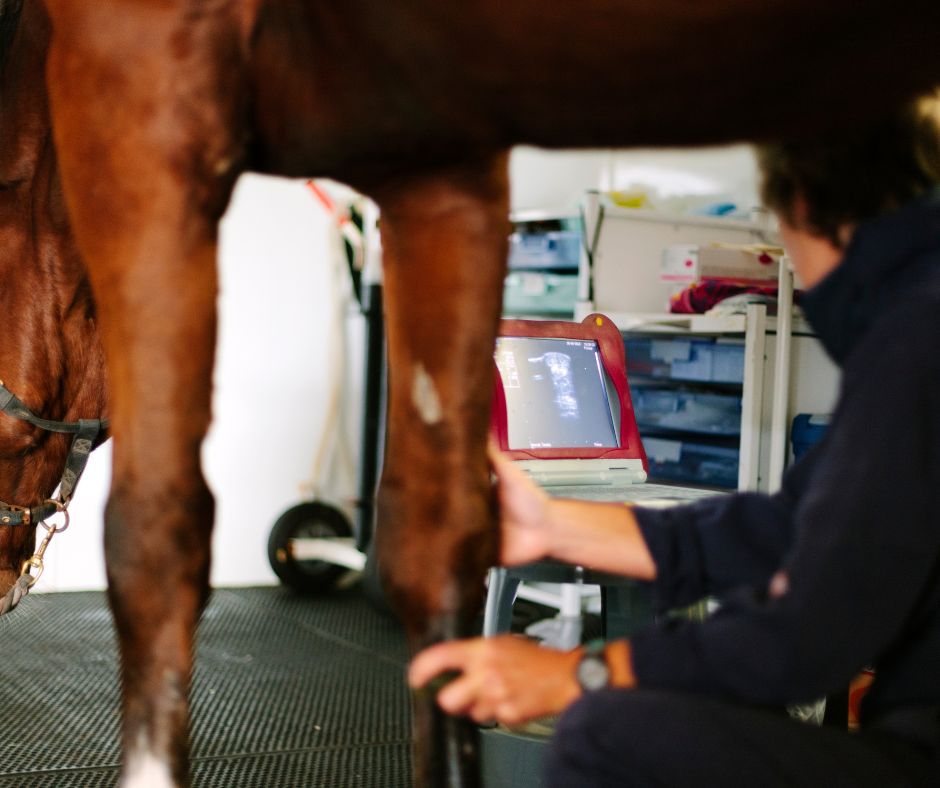Healing Horse Tendon Injuries
Healing Horse Tendon Injuries: Working as a Team, Vet, Phyio, and Osteopath
By Siun Griffin, Veterinary Physiotherapist and LCAO Community Manager
Horse tendon injuries can be a significant cause of concern for horse owners and trainers alike, as these injuries can lead to decreased performance, prolonged rest periods, and sometimes even retirement.
Tendons are crucial components of the equine musculoskeletal system, responsible for transmitting the force generated by the muscles to the bones and enabling movement.
When a tendon injury occurs, prompt and effective treatment is essential to ensure a successful recovery. Here, we will explore common veterinary approaches to healing horse tendon injuries, including traditional methods and emerging techniques.
Additionally, we will delve into the role of equine physiotherapists and osteopaths in developing comprehensive rehabilitation plans for these injuries.
Common Veterinary Approaches to Healing Tendon Injuries
Traditionally, horse tendon injuries have been managed using a combination of rest, controlled exercise, anti-inflammatory medications, and sometimes, surgical intervention.
Rest is a fundamental aspect of tendon healing, as it allows the injured tissue to undergo a controlled remodeling process. Controlled exercise, often in the form of hand-walking or controlled turnout, is gradually introduced to stimulate collagen alignment and strengthen the healing tendon.
New Techniques in Tendon Injury Rehabilitation
Recent advancements in veterinary medicine have led to the development of innovative techniques to enhance tendon healing. Platelet-rich plasma (PRP) and stem cell therapies are gaining popularity.
PRP involves drawing the horse’s blood, processing it to concentrate platelets, growth factors, and anti-inflammatory molecules, and injecting the resulting PRP solution directly into the injured tendon.
Stem cell therapy, on the other hand, uses the horse’s own stem cells to promote tissue repair and reduce inflammation.
Additionally, extracorporeal shockwave therapy (ESWT) is being used to stimulate blood flow and cell activity in injured tendons. This non-invasive procedure involves applying high-energy shockwaves to the affected area, which can accelerate healing and enhance tissue regeneration.
The Role of Equine Physiotherapists in Rehabilitation
Equine physiotherapists play a crucial role in the rehabilitation process after a tendon injury. They work closely with veterinarians and horse owners to design tailored exercise programs that aid in promoting healing, improving range of motion, and preventing muscle atrophy.
Physiotherapists may utilize techniques such as passive stretches, active exercises, and hydrotherapy to gradually reintroduce the horse to controlled movement.
Equine physiotherapists also employ modalities like therapeutic ultrasound and low-level laser therapy to enhance blood circulation, reduce inflammation, and accelerate tissue repair.
These professionals closely monitor the horse’s progress, adjusting the rehabilitation plan as needed to ensure a safe and effective recovery.
Equine Osteopathy in Tendon Injury Rehabilitation
Equine osteopathy is another valuable component of the rehabilitation process for tendon injuries. Osteopaths specialize in manipulating the musculoskeletal system to promote overall health and healing.
In the context of tendon injuries, equine osteopaths focus on restoring proper biomechanics, alleviating tension, and facilitating tissue recovery.
Techniques used by equine osteopaths may include myofascial release, joint mobilization, and soft tissue manipulation.
These methods aim to enhance tissue flexibility, reduce adhesions, and optimize biomechanical function, ultimately supporting the healing process of the injured tendon.
Final Thoughts
Horse tendon injuries remain a significant concern for the equine industry, but advancements in veterinary medicine and rehabilitation techniques offer promising avenues for improved outcomes.
From traditional approaches to cutting-edge therapies, the healing process for tendon injuries has evolved to encompass a holistic and multidisciplinary approach.
Equine physiotherapists and osteopaths play vital roles in developing comprehensive rehabilitation plans, tailored to the individual horse’s needs.
By leveraging the expertise of veterinarians, physiotherapists, and osteopaths, horse owners and trainers can provide their equine athletes with the best possible chance of a successful recovery and a return to optimal performance.
For more information on how you can become an Equine Osteopath, click here

